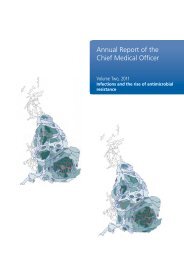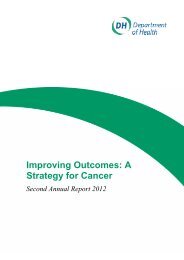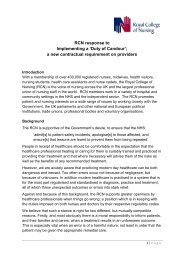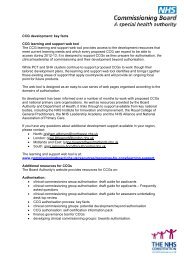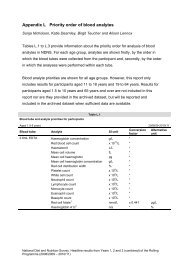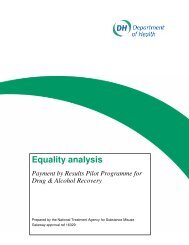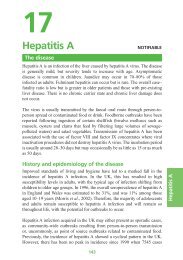Wellington House 133-155 Waterloo Road London SE1 8UG Tel ...
Wellington House 133-155 Waterloo Road London SE1 8UG Tel ...
Wellington House 133-155 Waterloo Road London SE1 8UG Tel ...
You also want an ePaper? Increase the reach of your titles
YUMPU automatically turns print PDFs into web optimized ePapers that Google loves.
Dear Colleague,<br />
EU Guidance on Tolerance<br />
<strong>Wellington</strong> <strong>House</strong><br />
<strong>133</strong>-<strong>155</strong> <strong>Waterloo</strong> <strong>Road</strong><br />
<strong>London</strong> <strong>SE1</strong> <strong>8UG</strong><br />
<strong>Tel</strong>: 020 7972 2000<br />
7 August 2012<br />
The Commission has issued a further revised draft of its guidance on<br />
tolerance to be applied to nutrition labelling declared in accordance with<br />
Regulation (EU) No 1169/2011 on the Provision of Food Information to<br />
Consumers. The latest draft is attached to this letter (in both clean and track<br />
changes). The revised guidance reflects the outcome of the discussions in the<br />
recent Member State working group on 29 th May 2012, and advice from the<br />
Advisory Group on the Food Chain.<br />
Conclusions from the working group included in the document are that:<br />
1. In table 1, for macronutrients option B (from the previous draft) will be<br />
implemented (more simple with only 3 categories and no anomalies<br />
between the categories) and option A for fatty acids.<br />
2. In section 5 for vitamins and minerals the upper tolerance is the upper<br />
tolerance level taken from table 1 and an example for a ‘reduced’ claim<br />
has been added.<br />
3. In section 6 the wording for ‘rounding rules’ has been changed to<br />
‘rounding guidelines’ and an option to label either “0”, or less than a<br />
given amount has been introduced in the last column<br />
Recommendations from Advisory Group on the Food Chain and further<br />
discussions with interested parties incorporated into the revised draft include:<br />
1. A paragraph introducing a transition period has been included. The<br />
Commission suggests a date of 31.12.2013 as the end date for this<br />
period and seeks comments on whether this is appropriate.<br />
2. A separate category in table 1, 2 and 3 and 4 has been added for<br />
vitamin C to reflect its instability. A higher upper tolerance of 80% has<br />
been introduced instead of +50%.
3. Additional examples have been included in sections 3. and 4.<br />
4. In Table 1: another option B has been introduced that consists of 3<br />
categories, without anomalies between the categories, that is wider<br />
than the previous chosen option. In the final document, only 1 option<br />
will remain. This reflects stakeholders’ views that the tolerance ranges<br />
in table 1 are too tight and that internationally a tolerance value of plus<br />
or minus (depending on the nutrient) of 20% is frequently used. The<br />
Commission is seeking views on whether this wider tolerance is<br />
acceptable. The Commission notes that for option B, a tolerance for fat<br />
of ±2g could be too wide at low levels (




